Types of motorscooters; motor scooter taxonomy
Site Map
What's New
Features
Scooters from Amazon.comYes Man, Scooters in Film
Larry Crowne and scootering
Helmet Free scootering
Scooters in a failing economy
Scooter Economy
Scooter ROI Analysis
Scooter pays for itself
Types of Motorscooters
Why ride a scooter?
Motorscooter FAQ
Buying Scooters Online
Join Our Mailing List
Recommend this site
Scooter Inspiration
Scooter EconomyMotorscooter Advantages
Motorscooter Disadvantages
Motorscooter Books
Motor Scooter Poetry
Business Scooter Travel
Motorscooter Posters
Motorscooters in California
Scooting in the UK
Green Scooting in China
Scooting in Italy
Motorscooters in Iraq
Motor Scooter History
The Ice-Cream Scooter
Pets and Motorscooters
RVs and Motorscooters
Gas vs. Electric Scooters?
Put-putting Pleasures
Recommended Scooters
Scooter Culture
Larry Crowne (film)
Dating and Scooter Culture
Motorscooter Freedom
Motor Scooter Image
Scooter Lib
Back to School on a scooter
Motor Scooter Music
Motorscooter Camping
Types of Motorscooters
Classic Motor ScootersItalian Motor Scooters
The Vespa Motorscooter
The Aprilia Motorscooter
Falcon Electric Scooters
50cc Motorscooters
Kymco Motorscooters
GT Chaunl Scooters
Chinese Motor Scooters
TANK Motorscooters
The RoadRunner Scooter
Roketa Motorscooters
The I-scooter
Moped Scooters
Mopeds
Scooter Choices
Best Scooter DealsThe Performance Scooter
The Luxury Scooter
The Minimalist Scooter
The Classic Scooter
The Basic Scooter
The I-scooter
The Electric Scooter
Stand-up Scooters
The Mobility Scooter
Used Motorscooters
California Legal Scooters
Toy Scooters
Practical matters
Trouble starting a scooterScooters and the Environment
Scooter Return On Investment Analysis
Motor Scooter Repair
The Scooter Commute
Scooter Repair Shops
Scooter Replacement Parts
Vespa Repair
Scheduled Maintenance
Fuel Efficient Driving
Essential Scooterist Kit
Passengers on a Scooter
Motor Scooter parking
Using the Kick Starter
Motor Scooter Batteries
Motor Scooter Stands
Rotating a Scooter
Cargo Storage Issues
Chinese Scooter Alarms
Scooter Roadside Assistance
Affordable Insurance
Scootering in groups
Motorscooter safety
Motorscooter SafetyDriving a Motorscooter
MSF Manual: Your Scooter
Scooters and Potholes
Important, before you drive
Motorscooter Helmets
All-weather Scootering
The Oily Path of Safety
Motorscooter Journal
Motorscooter JournalOff-highway scooter routes
The Scooterdoc
Scooter Choice Ethics
India Shuns Scooters
Left-handed Motorscooters
Other Types of Scooters
Mobility ScootersScooter-inspired Vehicles
Electric Motorscooters
The Three-wheel Scooter
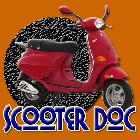
Vespa Service In
Southern California
Motorscooters Defined
There is a great deal of confusion about what scooters, motorscooters, mopeds, or mobility scooters are. This is an attempt to clarify the issue, or at least to define clearly the disagreements that exist. All of the motorscooter covered here use the 4-stroke engine and stepless automatic transmission combination that has become the global standard in motorscooters.
The Minimalist Motorscooter
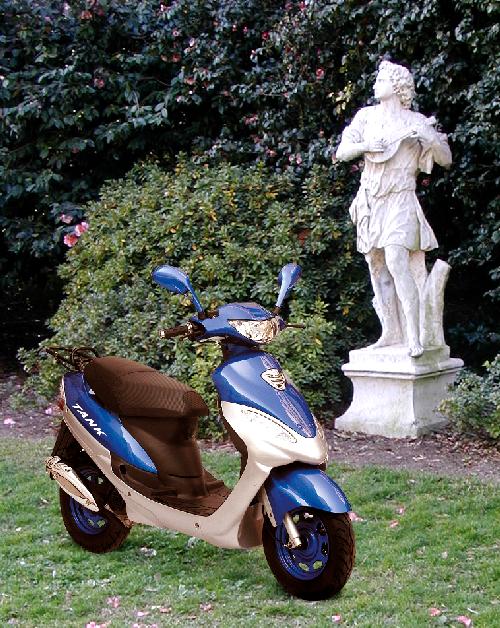
Motorscooters with less than 50cc engine displacement and a maximum speed of about 35 MPH (See 50cc Motorscooters) are extremely economical and perfectly adaquate for many purposes. These Minimalist scooters are the only gas-driven motorscooters that can truly be called "Mopeds", though the term is increasingly used in reference to larger motorscooters (See Mopeds). In many jurisdictions, 50cc motorscooters are exempt from state laws governing motor vehicles and no license nor registrations is required (though there is usually an age limit). This is not the case in California, and some other states however. See State Regulations.
The Basic Motorscooter

Basic Motorscooters are those which have engine displacement of more than 50cc up to 150cc or more. They are usually highway legal but often not quite heavy or fast enough to be comfortable driving at freeway speeds. They can handle two riders. Though often incorrectly designated "Mopeds," this designation has become fairly universal (See Moped Scooters).
The Performance Scooter
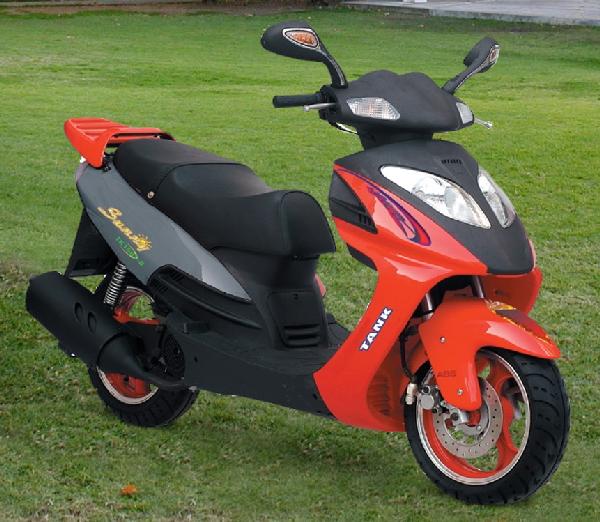
Performance motorscooters are those whose performance has been enhanced with custom features which increase power and speed. Their engines may have 150cc, 250cc or greater displacement. Sometimes called Race or Racing scooters, they are more powerful than basic and minimalist scooters. See Performance Scooters. These are also erroneously referred to as Mopeds.
The Luxury Scooter
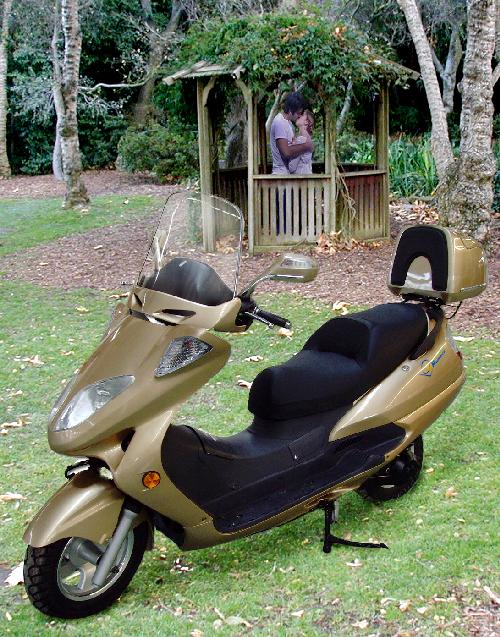
Luxury Motorscooters are those which emphasize comfort, space, and features. Often designated "Touring Scooters", they frequently have sound systems built in and usually have a raised pillion seat to enable the passenger to have a good view. Luxury Motorscooters have engines of 150, 250, or more displacement. See Luxury Scooters.
Electric Motorscooters
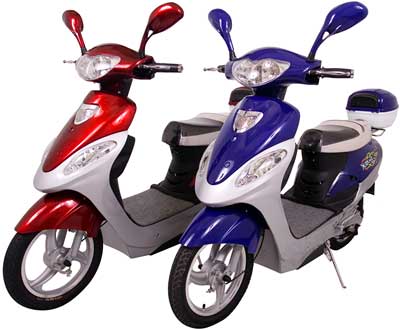
Not to be confused with mobility scooters (see below), electric motorscooters are street legal machines that run entirely on battery power. Some of the smaller ones qualify as Mopeds or electric bicycles and need no license nor registration, even in California. Others are quite powerful and can carry two people at street speeds. See Electric Motorscooters.
Classic Motorscooters

Classic motorscooters are those which either date back to the scooters of the 50s and 60s or that mimic the design of scooters from that period. Any sized scooter may be made in this classic design which tends to include a distinct separate front mudgard, and whose engine and drive train are completely enclosed in panneling. See Classic Motorscooters.
Mobility Scooters
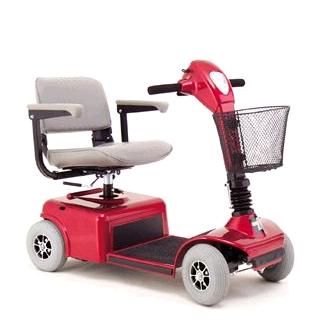
Unlike the scooters defined above, mobility scooters are not intended for open road transportation and generally have a top speed of 5 or 6 MPH. They do not require a license and are designed to provide powerful transport for individuals unable to walk or who lack the endurance to walk significant distances. Unlike the above scooters, mobility scooters may be driven on sidewalks, in an out of buildings, and on and off of public transportation. They play a very important role in allowing the elderly and handicapped a very flexible means of mobility. See Mobility Scooters.
.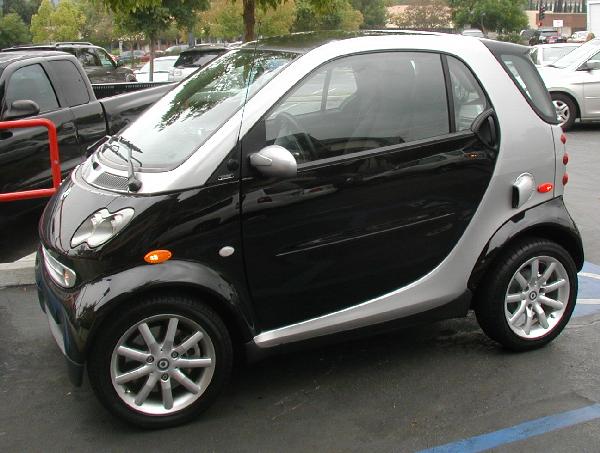
If you really need to sit beside your passenger, the ForTwo still gets 50-60mpg. Why, it's almost a scooter.
Bookmark this page to: